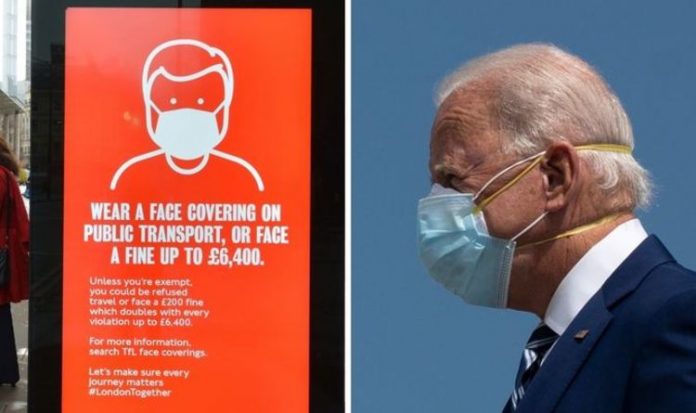Across the pong, the Centers for Disease Control and Prevention recommends people wear masks that have “two or more layers of washable, breathable fabric,” citing the added protection provided by another layer. Now, double masking is being considered by Government scientists at Public Health England.
Dr Susan Hopkins from PHE said at Monday’s press conference: “I think what we know is that the more layers you have the better.
“And so that we recommend at least two layers in the UK and ideally three layers in a mask, and that is really important to reduce the viral transmission, both from you to others and from others to you.
“We have got face masks and face coverings advisory group who meet on a regular basis, and look at new and emerging evidence, and the US has looked at some of that evidence as well.”
She added: “We are in an ongoing discussion about what to do next, but we think one mask that has more than two layers in it is currently effective for the vast majority of the population.”
Attendees including Amanda Gorman and Pete Buttigieg opted to wear two masks instead of one to the event.
The President has recently been seen wearing two masks as well, heeding the advice of the CDC.
David Heymann, a professor of infectious disease epidemiology at London School of Hygiene & Tropical Medicine, told the Guardian: “I understand that it might give the wearer a sense of control.
“But people need to be reminded that the reason they are wearing the mask, or masks, is to protect others.
“I am sure people find it reassuring but the eyes are still exposed.”
He continued: “If you are wearing a mask with an inside lining and an outside lining, so two different materials, it may be the same as a double mask of a single thickness made from two different materials.
“The best way to protect yourself still remains physically distancing, and washing your hands.”
Current rules in the UK mean masks are mandatory in most indoor settings unless you have a medical exemption.
This includes shops, train and bus stations, public service buildings and on public transport, among others.







